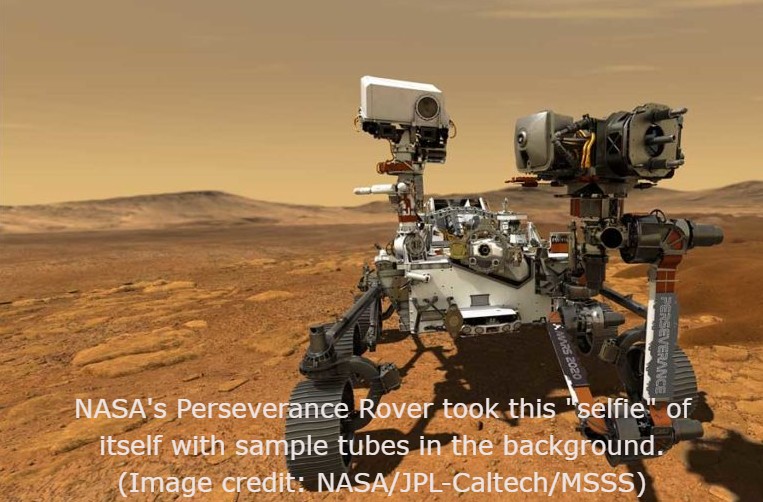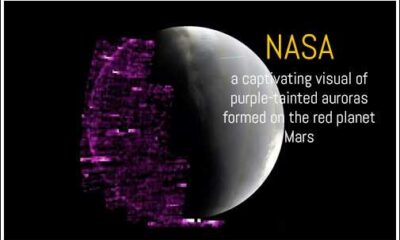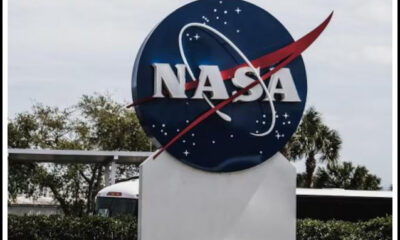India
NASA’s Perseverance Rover Has Completed a’sample Depot’ On Mars: Here’s How They’ll Get To Earth
Published
1 year agoon

NASA’s Perseverance rover has delivered the tenth and final sample tube that will serve as a backup “sample depot” on Mars.
NASA announced on Wednesday that its Perseverance Rover, nicknamed Percy, had completed the first “sample depot on another world” by dropping the tenth and final sample tube. The tube will be part of a depot that will be considered for return to Earth as part of the Mars Sample Return Campaign.
The Perseverance Rover finished the sample depot in less than six weeks, after dropping the first sample on December 21. The titanium tubes containing tubes of Martian rock and regolith (soil) are deposited on the planet’s surface in a zigzag pattern, each five to fifteen metres apart. The depot is located on flat ground near a fan-shaped ancient river delta, and the Perseverance team has precisely mapped the location of each tube to ensure that they can be found even if dust accumulates.
What exactly is the Mars Rover Perseverance?
NASA’s Perseverance Mars rover is approximately 3 metres long, 2.7 metres wide, and 2.2 metres tall. It’s about the size of a car but only weighs about 1,025 kilogrammes with all of its instruments aboard. Because it must function independently on the surface of a plant millions of kilometres away, it contains analogous parts, which are similar to those found in animals and aid in adaptation and survival.
Its body, for example, is a strong structure that protects its “vulnerable insides,” and its computers serve as the brain that processes all data. Its eyes and ears are made up of cameras and other instruments that provide it with information about its surroundings. Its “legs” are the wheels that enable it to move.
When was the launch of the Perseverance rover?
On July 30, 2020, Perseverance will launch on an Atlas V-541 rocket from Launch Complex 41 at Cape Canaveral Air Force Station in Florida. It and the Ingenuity Mars Helicopter landed on the surface of Mars on February 18, 2021.
What does NASA’s Perseverance rover seek?
Simply put, Perseverance is searching for signs of life on Mars. Previous missions conducted by NASA have discovered evidence that Mars once had flowing water before it became a frozen desert. Mars once had warmer surface environments that could have supported microbial life.
Perseverance seeks to answer one of the most important questions in the field of astrobiology: whether there are signs of past microbial life on Mars. In fact, the Jezero Crater, where it landed, has a high potential for hosting biosignatures of past microbial life.
The crater is a 45-kilometer-wide basin in Mars’ northern hemisphere. A river flowed into a body of water there around 3.5 billion years ago, according to NASA. According to NASA, the ancient river delta may have collected and preserved organic molecules and other signs of microbial life.
How are Perseverance samples going to be returned?
The Perseverance rover already carries a slew of scientific instruments that will allow researchers to study Mars in greater depth than ever before. SHERLOC (Scanning Habitable Environments with Raman & Luminescence for Organics & Chemicals) detects organic matter and minerals, and PIXL (Planetary Instrument for X-ray Lithochemistry) maps the chemical composition of rocks and sediments.
Read Also: India’s GDP Growth Will Slow to 6-6.8% According To Economic Survey: 10 Points Budget 2023
But, no matter how good those instruments are, the capability to extensively and comprehensively study the matter collected on Mars only exists in advanced laboratories here on Earth. As a result, some of the samples collected by the rover must be returned to Earth. But how will we accomplish this?
The Mars Sample Return Program comes into play here. This NASA-ESA collaboration will not only be the first to return samples from another planet, but it will also be the first mission to launch from the surface of another planet.
The campaign begins with a Sample Retrieval Lander, which would launch to Mars in 2023, carrying a NASA-led Mars rocket and a pair of small Mars helicopters similar to Ingenuity. It would land near Perseverance’s landing site in the Jezero Crater. After landing, the Perseverance rover would approach the lander and use a robotic arm to transfer samples from Percy to the lander’s rocket.
Perseverance’s samples deposited on the Martian surface will serve as a backup for the samples contained within the rover itself. The retrieval lander’s helicopters will scout for Perseverance’s samples, collect them, and bring them back to the lander, where they will be transferred onto the rockets.
You may like
-


“Purple Rain, Purple Rain”: NASA Releases Images of Mars’ Aurora
-


NASA prepares the PREFIRE mission to explore the polar regions of Earth
-


Earth’s North Pole is moving more quickly
-


National Quantum Mission Approved by Union Cabinet for Rs. 6,003 billion
-


the Google Pixel Fold will go on sale in June. Leaked renderings show two colour options.
-


Delhi now has Apple’s second location after Mumbai: CEO Tim Cook

